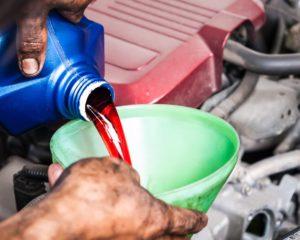The manufacturer recommends that you change your Honda Odyssey transmission fluid between 30,000 and 60,000 miles. Changing your transmission fluid on a routine basis will keep your vehicle in great shape and the transmission functioning properly. Learn the step by step method for a Honda Odyssey transmission fluid change.
If you need guidance about changing the transmission fluid of your Honda Odyssey, this is the article for you.
Contents
How to Change the Transmission Fluid in Your Honda Odyssey
Changing the transmission fluid in a Honda Odyssey isn’t very hard and, for most people, doesn’t require the need for a mechanic visit unless you don’t want to waste your time doing it yourself.
To make things easier for you, we compiled a step-by-step guide, taking you through the process for a quick and effortless fluid change.
Step One: Purchase the Correct Transmission Fluid
There are massive options when it comes to the variety of transmission fluids. You must purchase the options recommended for your specific make and model to avoid any serious damage from occurring.
You can easily find information regarding the right fluids for your car by looking through the owner’s manual provided by the vehicle’s manufacturer. But to save time here, the recommended transmission oil for a Honda Odyssey is Honda automatic transmission fluid.
While it isn’t the best option, you can also use other brands as long as they are labeled as ATF DW-1 or ATF-Z1. These will work fine and won’t cause any damage to your vehicle; mechanics will just suggest using the Honda-specific fluids.
A complete fluid change in a Honda Odyssey will require three liters of transmission fluid.
Step Two: Lift the Car
To change out the transmission fluids in a Honda Odyssey, you will have to have access to the vehicle’s undercarriage. You won’t need to climb under, but raising the front end of the car gives you safer and easier access to everything.
Step Three: Place the Drain Pan and Remove the Plug
Before removing the plug, place a drain pan directly underneath it to catch the old fluid. Once you have your plan in place, remove the plug, which is located directly behind the front bumper. Using a 3⁄8 inch ratchet, turn the plug counterclockwise to remove it.
Tip: Be ready; the stream will come out extremely fast at first.
Step Four: Replace the Drain Plug
Once the oil has finished emptying (which may take a few minutes), secure the drain plug back into its place, using the ratchet. Make sure the plug is snug and secure, but do not over-tighten it; this can cause damage to the seals creating leaks and could also make the following fluid change much harder if you can’t loosen up the over-tightened plug.
Step Five: Remove the Filler Plug
Pop the hood of your Odyssey and find the filler plug attached to the transmission. It will be tucked back towards the windshield behind and underneath the breather assembly.
Now, using a 17mm socket and a 15-inch extension for the extra length to reach it, unfasten the plug.
Step Six: Fill’er Up
With the assistance of a long-neck funnel, add the entire 3-liters of transmission fluid into the vehicle.
Once you have the compartment filled, replace the cap and take it for a test drive.
Step Seven: Re-Check Your Fluid Levels
After a quick trip around the block, turn off the vehicle and wait a few moments for the fluid to settle and cool down a bit. Locate the provided dipstick attached to the side of the transmission and under the air cleaner housing, and double-check the levels.
If you find you are a bit under the recommended levels, add a little more fluid to top it off.
What Happens if I Don’t Change the Transmission Fluids in My Honda Odyssey?
Plain and simple, if you don’t change the transmission fluids in your Odyssey after the recommended amount of time, you are going to end up with dirty debris-filled liquid flowing through your transmission, eventually causing performance issues and costly damages.
When Should You Have Your Transmission Flushed?
For the most part, simply changing out your fluids should be enough to keep your vehicle running smoothly. However, there are a few different reasons that you may need to have the entire system flushed. (which will require the assistance of a mechanic)
The major reason for a flush is when you add the wrong fluids to your transmission. You mustn’t drive your car if you accidentally added a fluid not meant for an Odyssey or the transmission.
You may also need a transmission flush if your vehicle is making grinding noises, you notice your gears are slipping, or there is a delay in shifting.
Summing Things Up Honda Odyssey Transmission Fluid Change
Changing your transmission fluid is an extremely important part of vehicle maintenance and shouldn’t be overlooked, especially if you start to notice any problems coming from the gears when shifting.


2 thoughts on “Honda Odyssey Transmission Fluid Change – Step by Step Guide”
Comments are closed.